If you’re in the euro zone and have some coins then there’s a chance you’ve got some icons of Slovenia in your pocket. This is because the EU allows countries to choose their own designs for the reverse sides of coins, and back in 2004 and 2005 Slovenia chose eight, one for each denomination. (Although if this comes up on quiz night, note that the country didn’t start using the currency until 1 January 2007.)
Each design represents something from Slovenian culture, which we’ll present below should you decide to take an interest in numismatics and want to collect the whole set, or find yourself left to your own devices, without a phone, friend or book, and only a pocketful of change for entertainment.
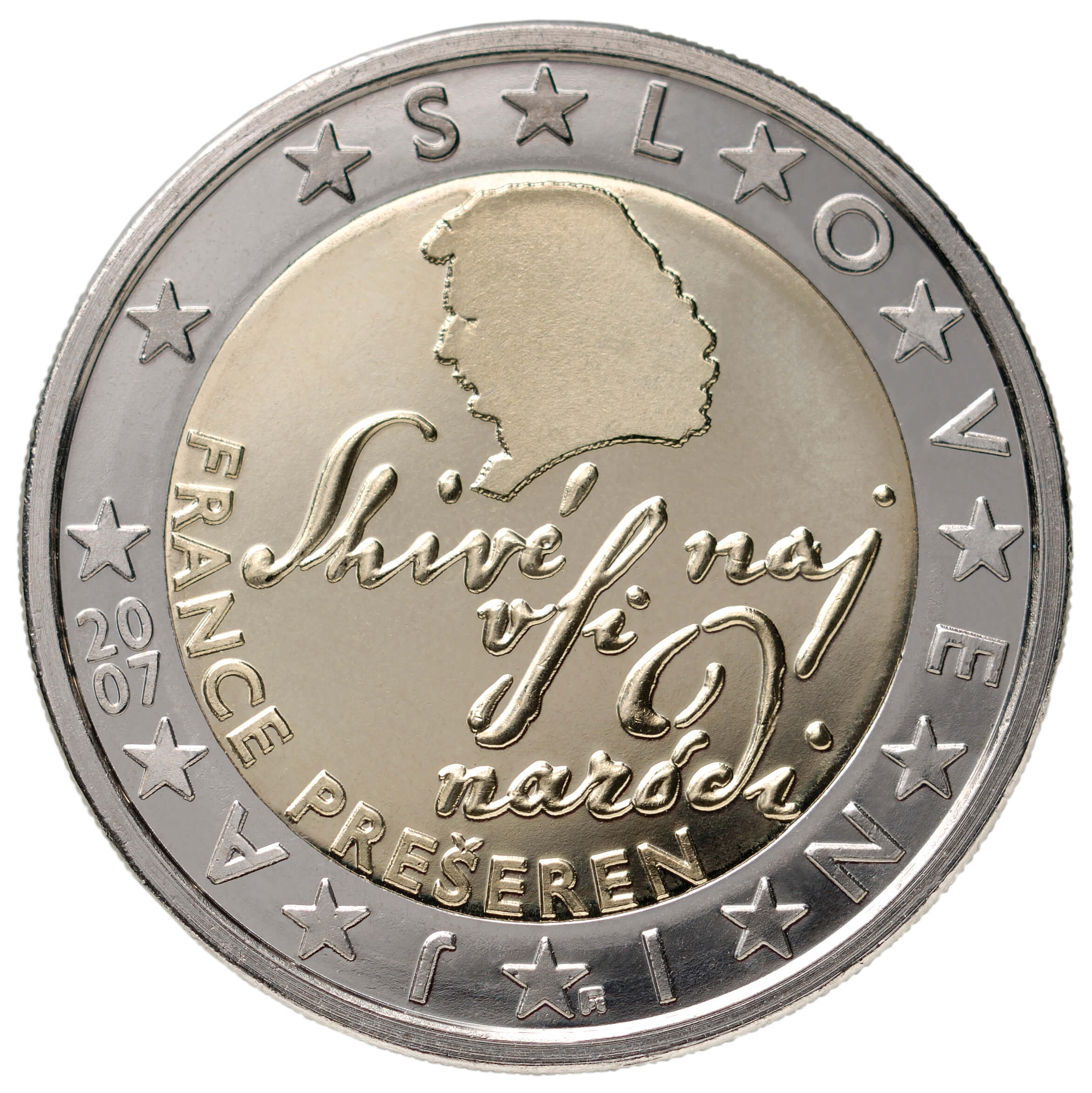
France Prešeren, the 19th century poet, appears on the two euro coin, as befits the man whose words would go on to become the Slovenian national anthem. Since there’s no attested authentic portrait of the man, despite the images of him you’ll often see, and the statue that stands in his namesake square in Ljubljana, his face is only shown in silhouette. However, the first line of the poem that’s used in the Slovenian anthem is shown in his handwriting: Žive naj vsi narodi (May all nations live).

Primož Trubar (1508 – 1586) is the other literary figure shown on Slovenian coinage, the author of the first two books printed in the Slovene language, Catechismus and Abecedarium, a religious work and one to help people learn the alphabet, respectively. Along with the man’s portrait the coin bears the words Stati inu Obstati (To exist and persevere).
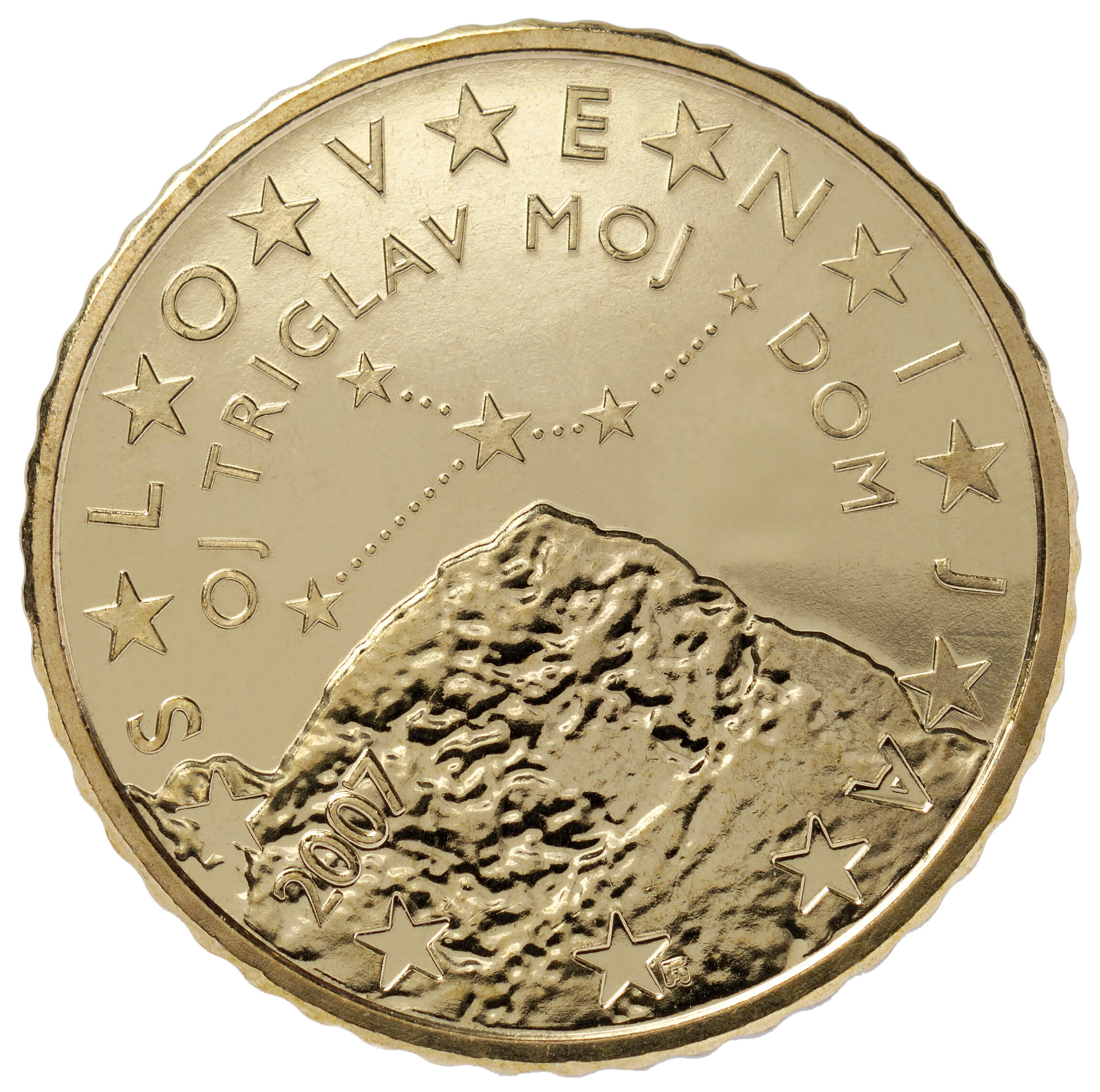
Triglav is the tallest mountain in Slovenia, and “all true Slovenes” are supposed to climb it at least once in their lives. The triple peak, which is easier to see in stylized representations that real life, was used as a symbol by those fighting against occupation in World War 2 and can be seen on the Slovenian flag. Also shown on the coin, above the peak, is the constellation of Cancer, the sign of zodiac under which the nation finally achieved independence, on 23 December 1990. The inscription reads Oj Triglav moj dom (Oh Triglav, My Home).
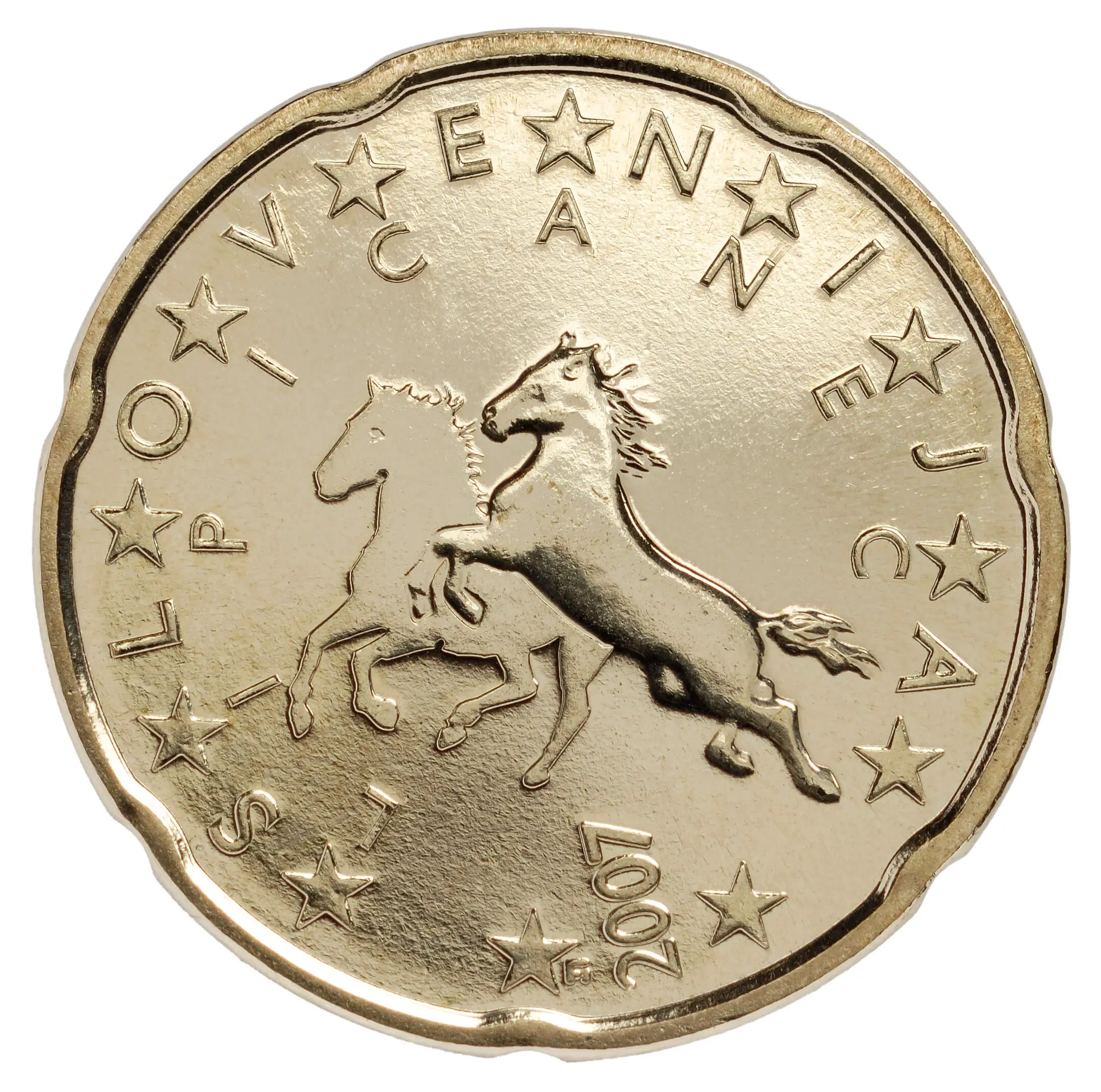
While Austria makes a claim to Lipizzaner horses, because they served the imperial court under the Austro-Hungarian Empire, they were (and are) bred and trained in Lipica. The 20-cent coin shows two of them at play. The inscription says Lipicanec, or Lipizzaner.
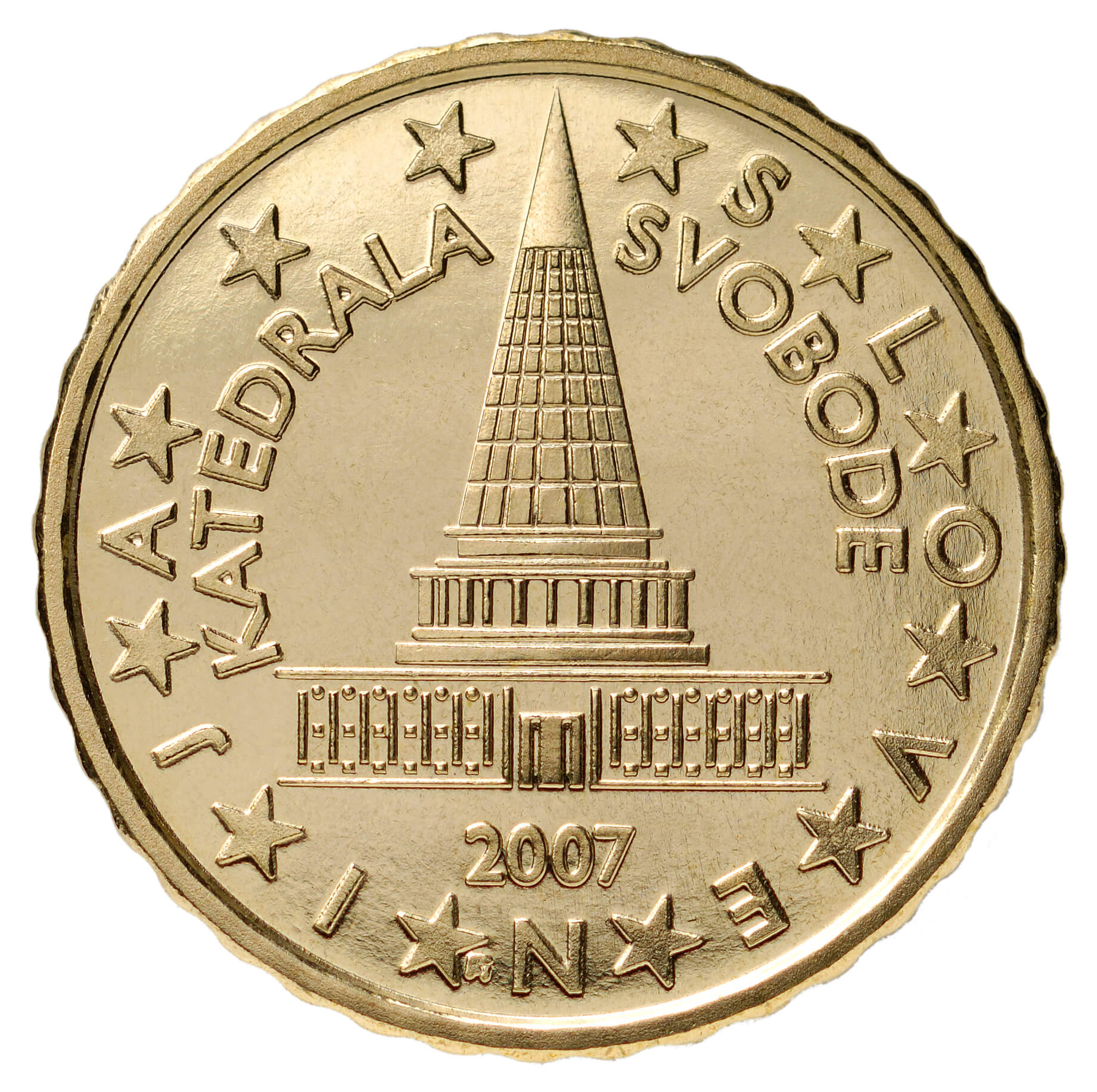
Jože Plečnik is the architect mostly closely associated with Ljubljana, responsible for the Triple Bridge, Križanke, the Central Market, the Arcades, the National University Library and more (although not Dragon Bridge). The 10-cent coin shows one of his many unrealised and perhaps overambitious works – a structure formally known as the Slovene Acropolis or Cathedral of Freedom (Slovenska akropola / Katedrala svobode), with that latter name appearing along with the image. You can see more of Plečnik’s unrealised works for the city here.
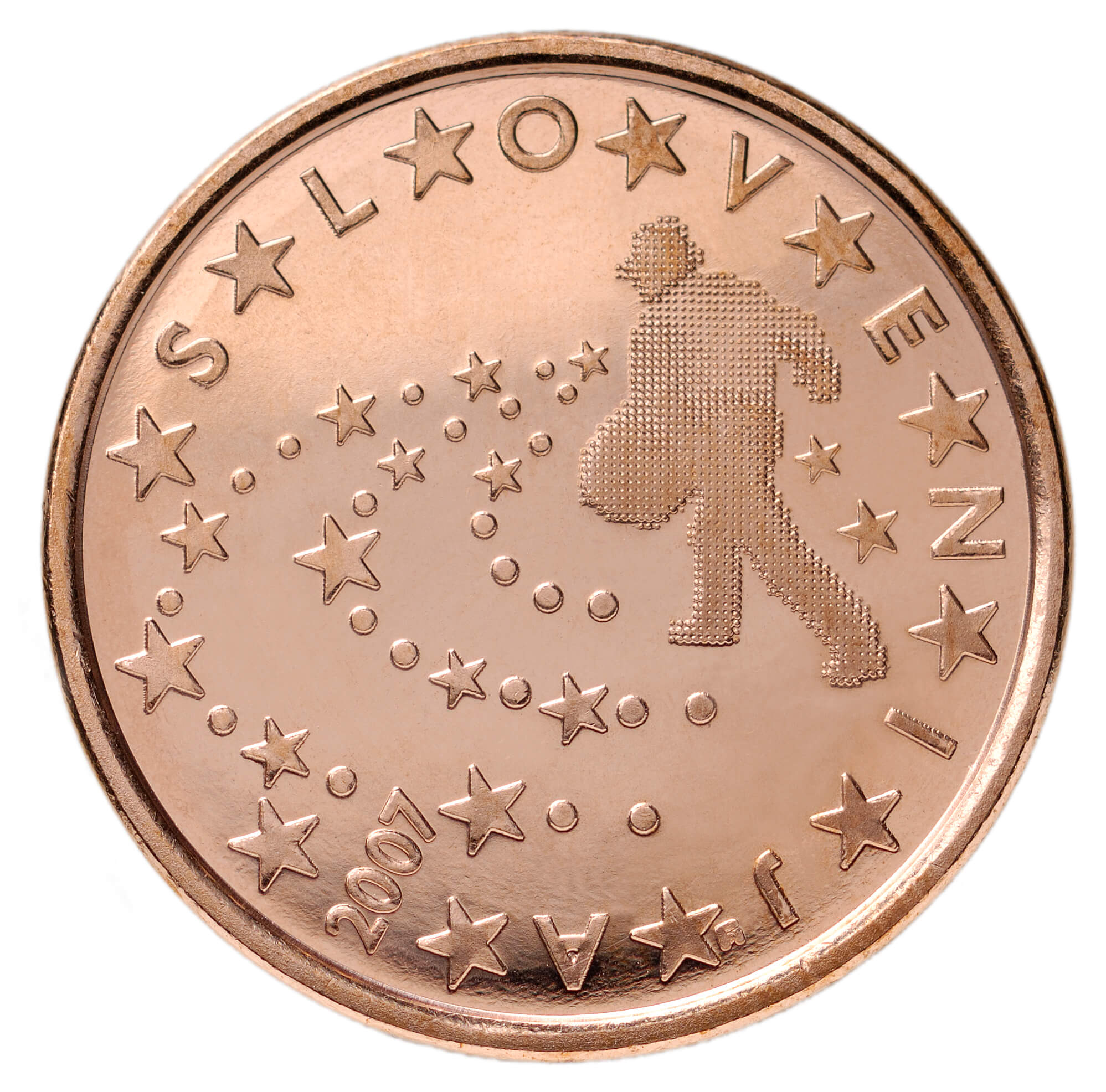
The five-cent coin shows a man sowing seeds in a field, which – according to the Bank of Slovenia – represents the moment when a farmer is closest to God. The design is based on a famous painting called The Sower (Sejalec) by the Slovene impressionist Ivan Grohar, with can be found in the National Gallery.
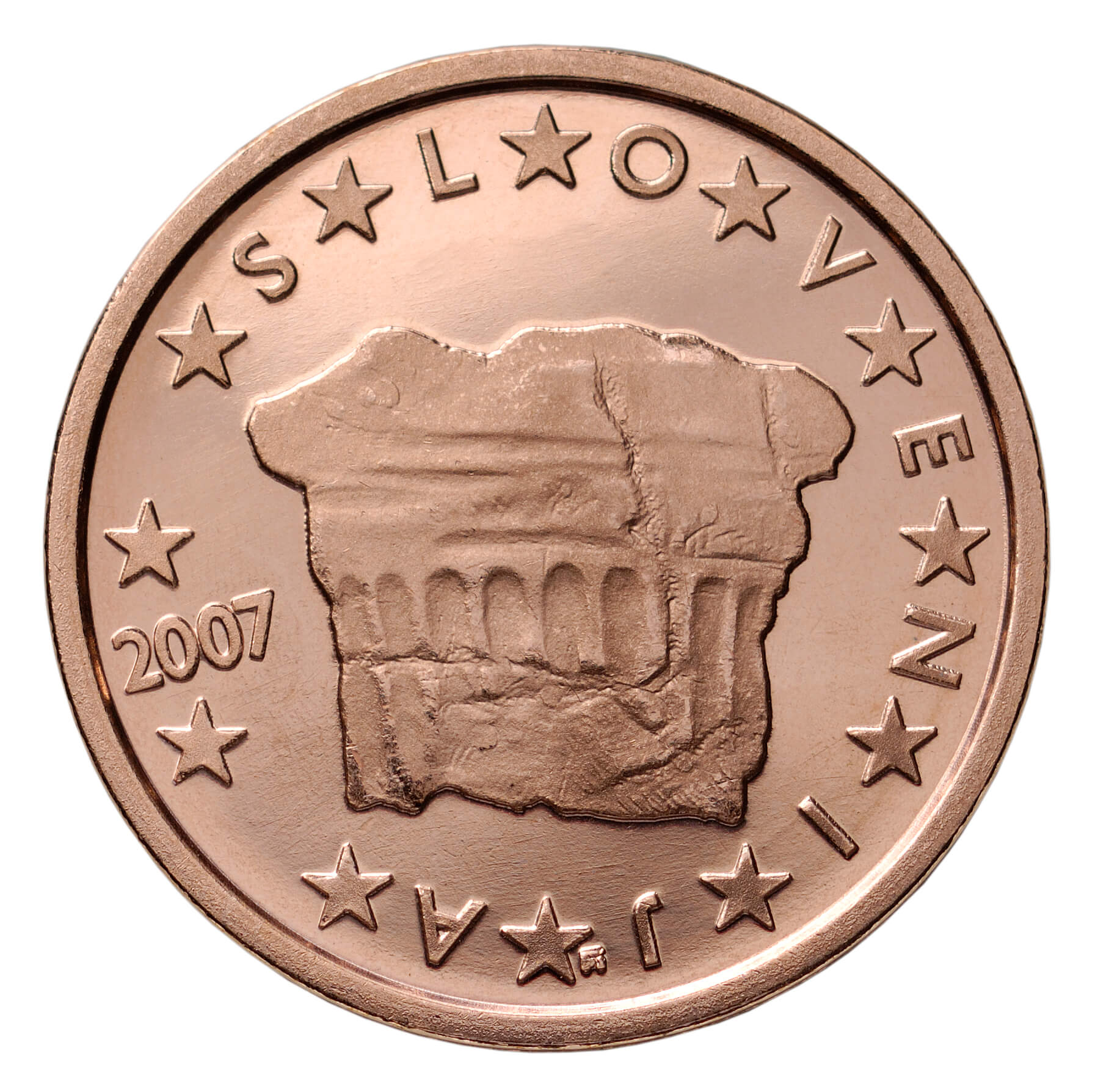
This unassuming looking stump is in fact “the Prince’s Stone” (knežji kamen), the reversed base of an ancient Ionic column, thought to be from the Roman city of Claudium Virunum (today’s Zollfeld, Austria), which was used in the ceremony for the coronation of the Dukes of Carinthia.
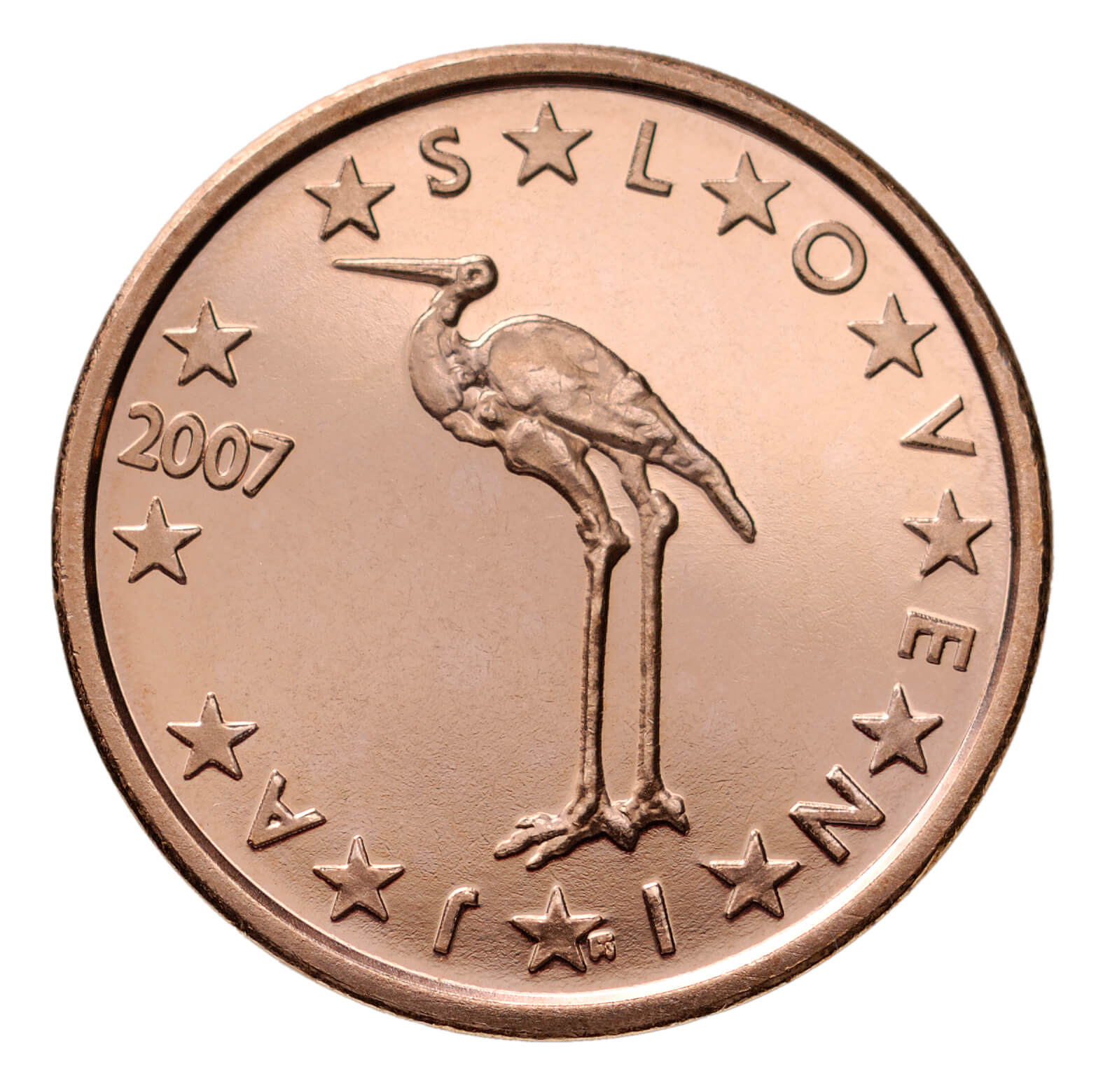
The stork shown on the humble one-cent coin is a vestige of Slovenia’s pre-euro currency, the tolar, which lasted from 8 October 1991 to 1 January 2007. This motif originally appeared on the 20 tolar coin.
Related: A brief history of money in Slovenia






